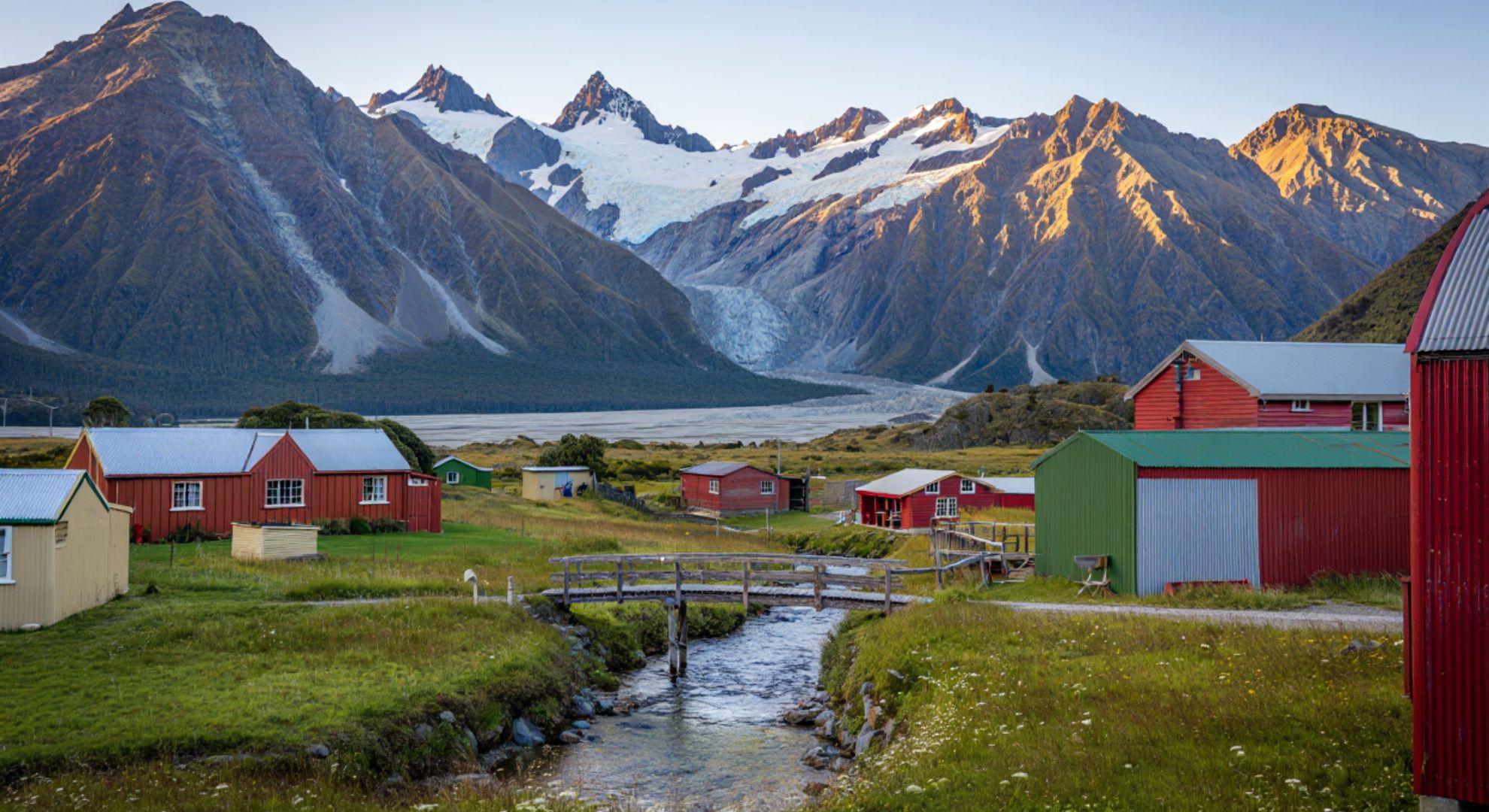The road slips past sheep-dotted fields and ferns, then narrows to a ribbon that leans into cliffs and creeks. Somewhere beyond the last letterbox sits Waipahere, a small South Island hamlet that locals whisper about and road-trippers miss. What it lacks in billboards, it trades for clarity: air that tastes like rain, water that glitters like glass, and hills that fold into each other like green origami.
Finding Waipahere
Waipahere rests between beech forest and tidal flats, not far from a forgotten rail siding and a modest estuary. The map draws a thin line toward it, then stutters; cellphone bars retreat, and time stretches. “Take the road until the asphalt ends,” a farmer told me with a shrug, “then keep going.”
The village itself is five streets, a timber hall, and a wharf no longer counting the boats that left. A single café serves pearl barley scones and brown butter honey; its chalkboard leans, and the coffee is honest.
Landscapes that Rewrite the Map
Morning light threads through silver birch and flax, stitching a horizon of limestone bluffs and slow rivers. On the ridge, the wind is salted and frank; below, the estuary whispers to sand, then swallows its own steps. From the track called Kōtare, you see a braid of water, cloud, and mountains that somehow feel untouched yet lived-in.
Seals lounge on kelp, and herons needle the shallows with surgical patience. On storm days the entire bay turns slate and silver, a rough etching you could hang on a gallery wall.
People and Quiet Rhythms
You’ll meet craftspeople who carve pounamu by lamplight, a beekeeper with sunburned wrists, and teenagers who bike to the headland for the weak signal that pokes through at dusk. Markets bloom on Saturdays: jars of mānuka honey, hand-dyed wool, beer brewed in a garage that smells like orange peel and malt.
“Visitors arrive with their shoulders up,” says Mere, the postie, “and leave with pockets of sea glass and time.” Another local, Lachie, grins: “We’ve got no nightlife—only night. It’s full of stars if you look up.”
Why It Stays Off the Radar
Waipahere preserves its quiet by accident and choice. The highway misses it; tour coaches prefer a louder set of postcards. There’s no big logo, no swing bridge packaged for selfies. Infrastructure is humble, and beds are limited: a cottage under macrocarpa, a two-room lodge, a campground where pīwakawaka visit your mug.
“Small,” says Hine, who runs the hall, “isn’t a defect. It’s our design.”
How It Compares
Here’s how Waipahere stacks against bigger South Island names, if you’re weighing mood over mileage.
| Place | Crowds | Cost Level | Access | Signature View | Vibe |
|---|---|---|---|---|---|
| Waipahere | Sparse | Low | Gravel road | Estuary + limestone | Slow, handmade |
| Queenstown | Heavy | High | Direct highways | Lake + peaks | Adrenaline |
| Milford Sound | Moderate | Medium | Tour coaches | Fiord cliffs | Sublime |
| Wanaka | Busy | High | Easy drive | Mirror lake | Polished |
What To Do With A Day
- Walk the Kōtare Track at dawn, trace the estuary boardwalk, sip a flat white at the café, watch herons on the tide, browse the hall market, and end with cloudberries over vanilla ice at sunset.
Weather, Seasons, and Small Truths
Spring spreads lupins like confetti; summer smells resinous and blue; autumn ambers the hills and softens the wind; winter draws stars closer and keeps the mosquitos humble. Pack for layers; the sky has moods, and they change swiftly.
The best months are shoulder seasons, when roads are clear and birds seem chatty. If it rains—and it will—rivers turn eloquent, and rocks shine like wet seals.
Respect Is the Ticket In
This place isn’t a theme park; it’s a home. Keep gates shut, tread softly on shell middens, and carry your rubbish out. Ask before droning. Learn a couple of reo words—kia ora, and whānau. The reward is trust, which opens more doors than keys.
Getting There Without Getting Lost
From State Highway 6, look for an unassuming signpost scuffed by wind. The last 12 kilometers are gravel, rutted but passable in fair weather. Fuel up earlier; the village has only cookies and a well of kindness, neither of which powers a tank. Consider the afternoon bus that stops at the siding twice a week and waits for exactly no one.
One More Moment
Stand on the jetty when the tide swings, and you’ll hear the village exhale: dogs on distant verges, a gull’s ragged laughter, the soft tock of ropes against timber. You may think you’ve discovered a secret. You haven’t. You’ve been invited—briefly—to borrow someone else’s peace, and to set it down as lightly as you can.
